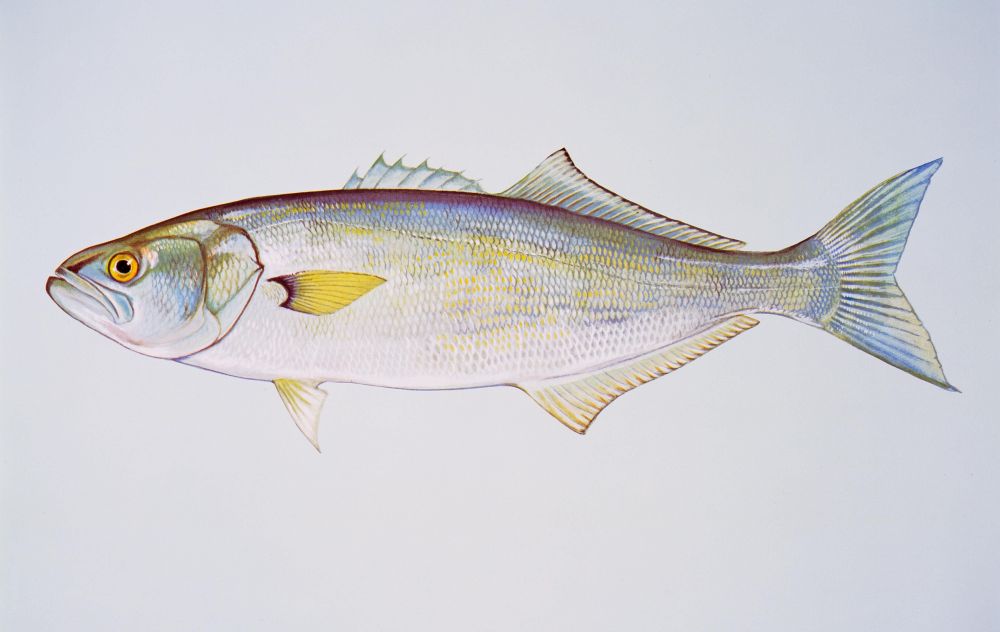
Read the article with FishingTheSpot: the bluefish
Keep an eye on this subject!
Thousands of species spotlights and techniques but also all the local information about your city!



Meet other anglers near you and share your fishing fishing trips, afoot or on a boat, at sea or in freshwater
See the fishing tripsThe Bluefish

summer
no restriction
Did you fish
this species this month?
The Bluefish belongs to the Pomatomidae family. The average size of the bluefish is 18 cm for a weight of 9 and a maximum of 18 kg. It can live up to 9 years. They breed from June to August. It can be found in abundance in summer.
The body is oblong and elongated. The head is quite short and the jaws are powerful, armed with strong incisors. The lower jaw is thick. The first dorsal fin is composed of short, robust spiny rays, the second dorsal fin and the anal fin are approximately symmetrical. The body and the caps are covered with small cycloid scales. The body is blue grey to dark green grey on the back, the sides and belly are silvery. A dark mark at the birth of the pectoral muscles is characteristic.
The bluefish lifestyle
Bluefish eat a variety of small animals such as shrimp, crabs, small lobsters, larval mollusks and fish larvae, etc… Adult blue fish are opportunistic eaters, generally focusing on species such as menhaden, sand eels, squid, mackerel, herring, alewife, butter, marmot and horned (essentially everything).
Bluefish have no external characteristics that can be used to distinguish male from female. However, males mature earlier but their possible size is not a gender indicator. Bluefish reach sexual maturity in their second years. Females extrude between 0.6 and 1.4 million eggs per spouts during their migration along the coast. The males then spread their milt and fertilization occurs. Depending on the water temperature, floating and oil-laden eggs can hatch within 44 to 48 hours of fertilization. The newly hatched blue fish then migrate into estuaries and bays to a weight of about 1.35 kg.
The Bluefish habitat
The smallest bluefish inhabit in estuaries and bays along the coast almost all year round. When they reach maturity, they begin annual migrations. As the bluefish grows, the migration distance also increases. They can adapt to a water temperature as low as 14°C and can maintain a body temperature up to 40°C above ambient temperature. These coastal fish sometimes move to brackish waters, where they can tolerate a salinity concentration as low as 7 parts per thousand.
Bluefish are found in all ocean and coastal waters except the eastern and northwestern Pacific.
The Bluefish angling
Fishing for bluefish can be done simply from a boat or ashore. Fishermen use a variety of jigs, plugs, mackerel or squids as lures when trolling or trolling.


